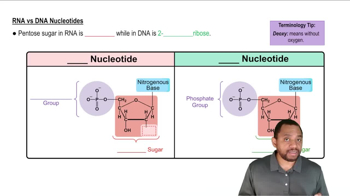Textbook Question
What is the difference between a gene and a chromosome?
 Verified step by step guidance
Verified step by step guidance Verified video answer for a similar problem:
Verified video answer for a similar problem:



 1:55m
1:55mMaster Intro to Nucleic Acids Concept 1 with a bite sized video explanation from Jules
Start learning